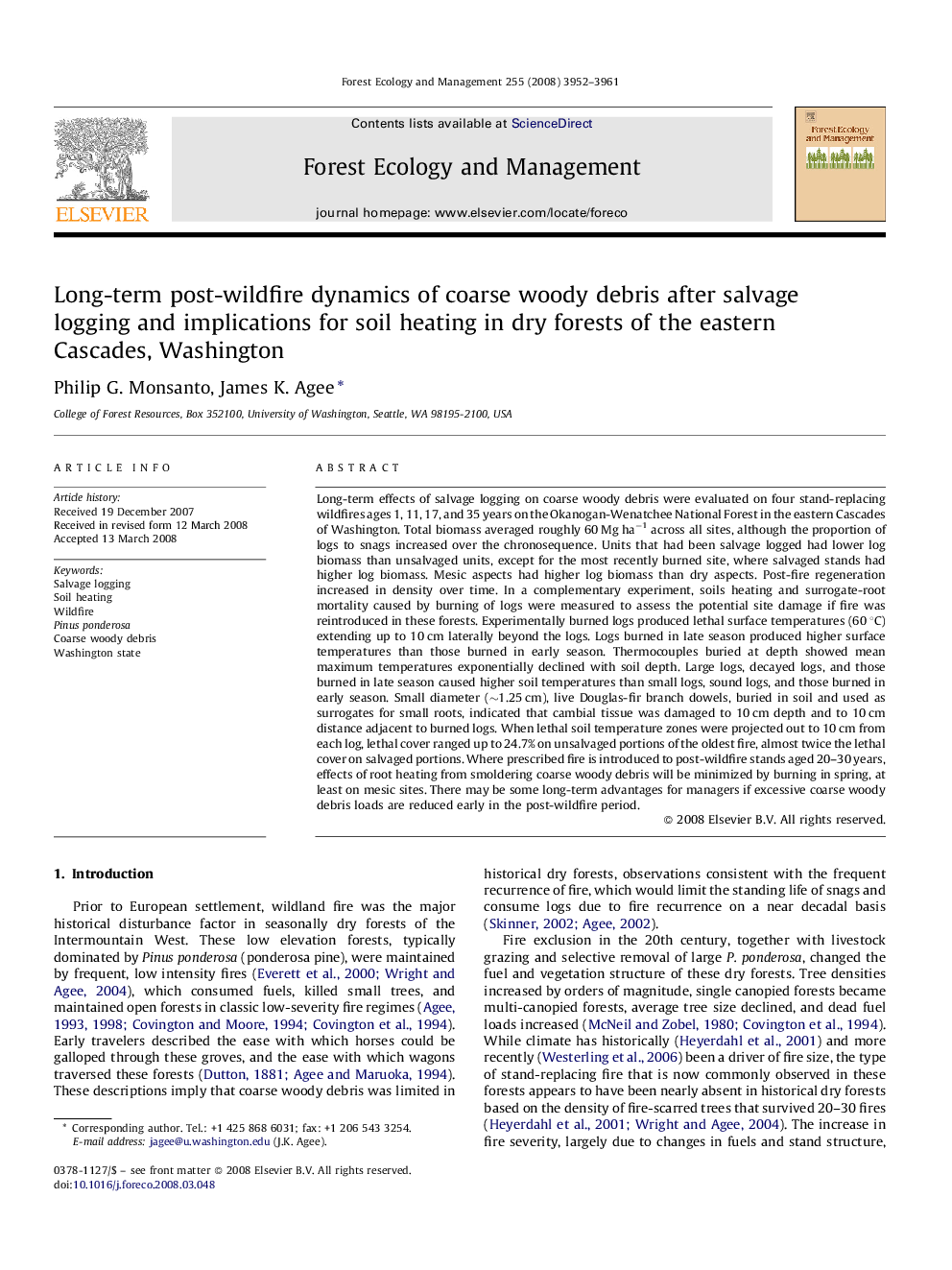| کد مقاله | کد نشریه | سال انتشار | مقاله انگلیسی | نسخه تمام متن |
|---|---|---|---|---|
| 89687 | 159351 | 2008 | 10 صفحه PDF | دانلود رایگان |

Long-term effects of salvage logging on coarse woody debris were evaluated on four stand-replacing wildfires ages 1, 11, 17, and 35 years on the Okanogan-Wenatchee National Forest in the eastern Cascades of Washington. Total biomass averaged roughly 60 Mg ha−1 across all sites, although the proportion of logs to snags increased over the chronosequence. Units that had been salvage logged had lower log biomass than unsalvaged units, except for the most recently burned site, where salvaged stands had higher log biomass. Mesic aspects had higher log biomass than dry aspects. Post-fire regeneration increased in density over time. In a complementary experiment, soils heating and surrogate-root mortality caused by burning of logs were measured to assess the potential site damage if fire was reintroduced in these forests. Experimentally burned logs produced lethal surface temperatures (60 °C) extending up to 10 cm laterally beyond the logs. Logs burned in late season produced higher surface temperatures than those burned in early season. Thermocouples buried at depth showed mean maximum temperatures exponentially declined with soil depth. Large logs, decayed logs, and those burned in late season caused higher soil temperatures than small logs, sound logs, and those burned in early season. Small diameter (∼1.25 cm), live Douglas-fir branch dowels, buried in soil and used as surrogates for small roots, indicated that cambial tissue was damaged to 10 cm depth and to 10 cm distance adjacent to burned logs. When lethal soil temperature zones were projected out to 10 cm from each log, lethal cover ranged up to 24.7% on unsalvaged portions of the oldest fire, almost twice the lethal cover on salvaged portions. Where prescribed fire is introduced to post-wildfire stands aged 20–30 years, effects of root heating from smoldering coarse woody debris will be minimized by burning in spring, at least on mesic sites. There may be some long-term advantages for managers if excessive coarse woody debris loads are reduced early in the post-wildfire period.
Journal: Forest Ecology and Management - Volume 255, Issue 12, 30 June 2008, Pages 3952–3961